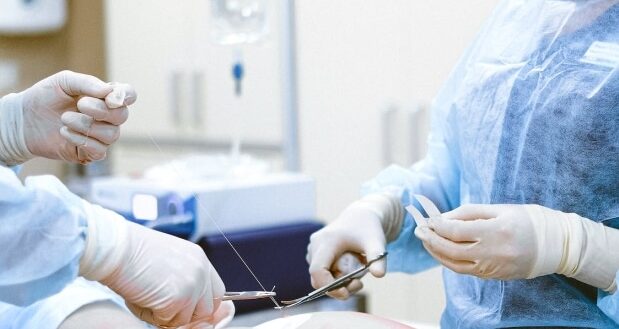Six Health Risks Associated With Implantable Medical Devices
Implantable medical devices (IMDs) have revolutionized modern medicine, offering advanced solutions for various health conditions. From pacemakers regulating heart rhythms to cochlear implants restoring hearing, these devices have significantly improved the quality of life for millions worldwide.
According to Global Market Insights, the global implantable medical device market is valued at around $112.5 billion as of 2022. By 2032, this market is expected to reach about $271.5 billion.
Grand View Research reports that the global pacemakers market alone was valued at $4.51 billion in 2022. By 2030, the market will reach $5.94 billion.
However, like any medical intervention, implantable devices carry inherent risks. While they offer tremendous benefits, being aware of potential health risks associated with their use is crucial.
Infection
When a device is implanted into the body, it creates a foreign surface that bacteria can adhere to, leading to infections. Infections can occur during the initial implantation surgery or develop later due to factors such as poor wound healing or compromised immune function.
Symptoms of an infection may include redness, swelling, warmth, pain, or drainage at the implant site. In severe cases, infections can spread systemically, leading to sepsis, a life-threatening condition requiring immediate medical attention.
Device Malfunction
Despite rigorous testing and quality control measures, implantable medical devices can malfunction. Malfunctions may occur due to design flaws, manufacturing defects, or damage during implantation or use. A malfunctioning device can malfunction, leading to serious health consequences.
Take the Paragard IUD – an intrauterine device – as an example. Although not necessarily an implant, this birth control device does get placed inside the body. However, as reported by TorHoerman Law, several women have experienced injuries while using this IUD or trying to remove it. These injuries include internal bleeding, infections, and organ damage.
Due to the Paragard IUD complications, the Paragard lawsuits were filed. The Paragard IUD lawsuit settlement amounts could be between $10,000 and $400,000. New Paragard IUD lawsuits are still being filed, showing just how grave the situation is with these devices.
Tissue Damage
Implantable medical devices interact with surrounding tissues and organs, sometimes leading to tissue damage. Over time, the presence of a device can cause irritation, inflammation, or even erosion of nearby tissues.
For instance, metal hip implants can cause tissue damage and metallosis, a condition characterized by the release of metal ions into the bloodstream. Tissue damage can compromise the function of affected organs. It may necessitate surgical intervention to repair or replace the damaged tissues.
Allergic Reactions
Some individuals may experience allergic reactions to materials used in implantable medical devices. These reactions can manifest as localized inflammation, swelling, itching, or systemic symptoms such as hives, rash, or difficulty breathing.
Common allergens in implants include metals like nickel, cobalt, or chromium. According to the American Academy of Dermatology Association, metal implants can cause skin conditions such as dermatitis. Nickel, in particular, is a common culprit of allergic contact dermatitis.
Patients with known allergies or sensitivities to these materials should discuss potential risks with their healthcare providers before undergoing implantation procedures. In severe allergic reactions, removing or replacing the implant may be necessary to alleviate symptoms and prevent further complications.
Migration or Dislocation
Implantable medical devices are typically designed to remain securely in place within the body. However, in some cases, devices may migrate or become dislodged from their intended position.
Migration or dislocation can occur due to inadequate fixation, trauma, or changes in the surrounding anatomy. For example, breast implants may shift position over time, leading to asymmetry or discomfort.
In more critical situations, the migration of devices such as stents or vascular grafts can impede blood flow or cause organ damage. This can require surgical intervention to reposition or remove the device.
Thrombosis or Embolism
Certain implantable medical devices, particularly those used in vascular interventions, increase the risk of thrombosis (blood clot formation) or embolism (clot dislodgement).
For example, intravascular stents placed to support narrowed blood vessels can promote the formation of blood clots. This leads to occlusions and can cause heart attacks or strokes. Similarly, artificial heart valves may increase the risk of clot formation, necessitating lifelong anticoagulant therapy to prevent thrombotic complications.
Patients with implantable devices should be vigilant for signs of thrombosis or embolism, such as chest pain, shortness of breath, or neurological deficits. If these symptoms occur, they must seek prompt medical attention.
In conclusion, implantable medical devices offer significant benefits in managing various health conditions but are not without risks. Patients considering implantation procedures should engage in thorough discussions with their healthcare providers to weigh the potential benefits against the associated risks.
Regular monitoring and follow-up care are essential to detect and address any complications that may arise following device implantation. Find out the type of breast implant with the highest success rate here.






